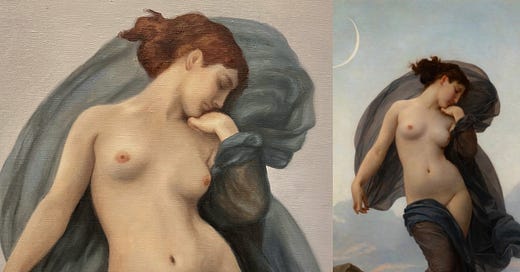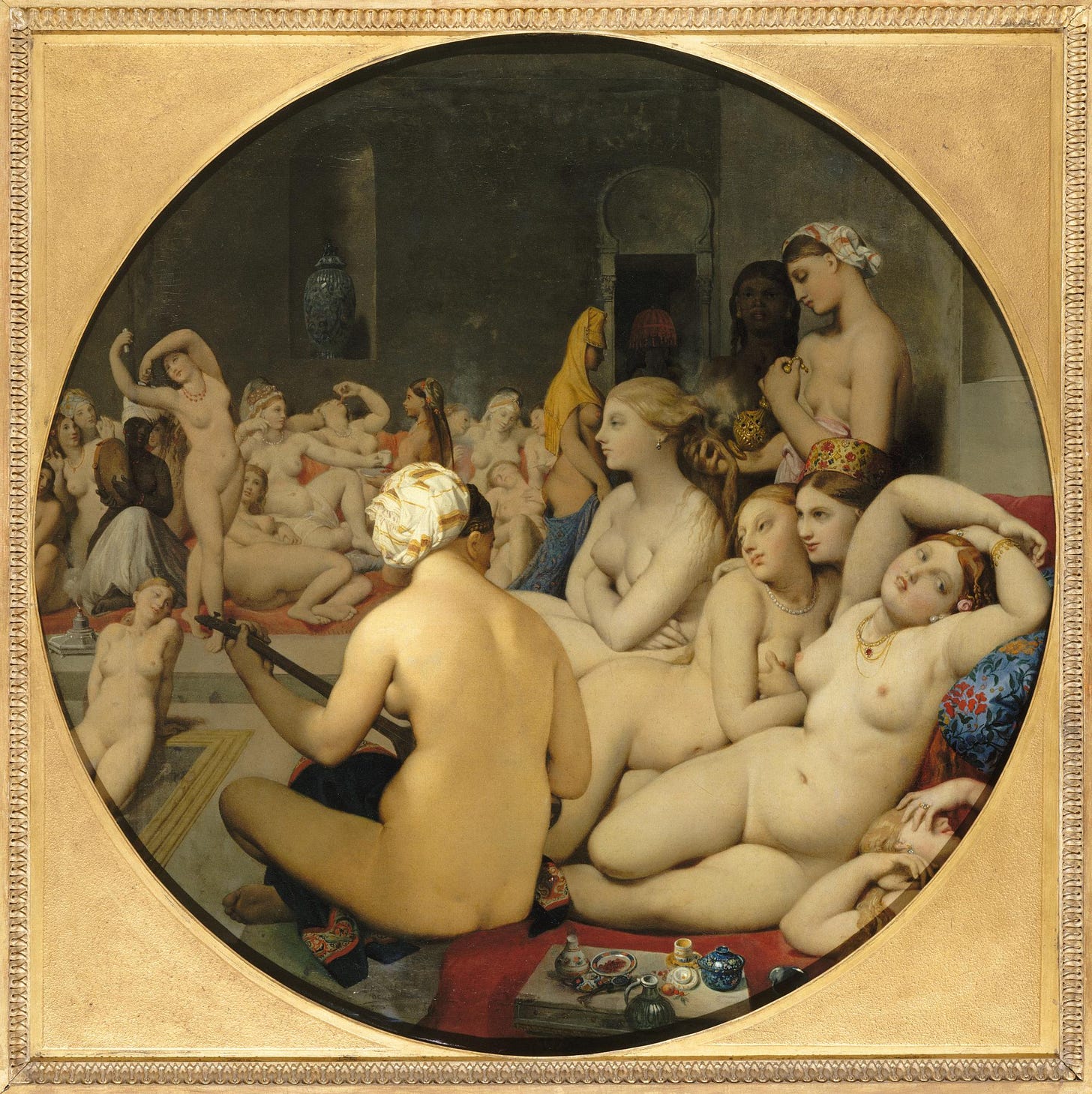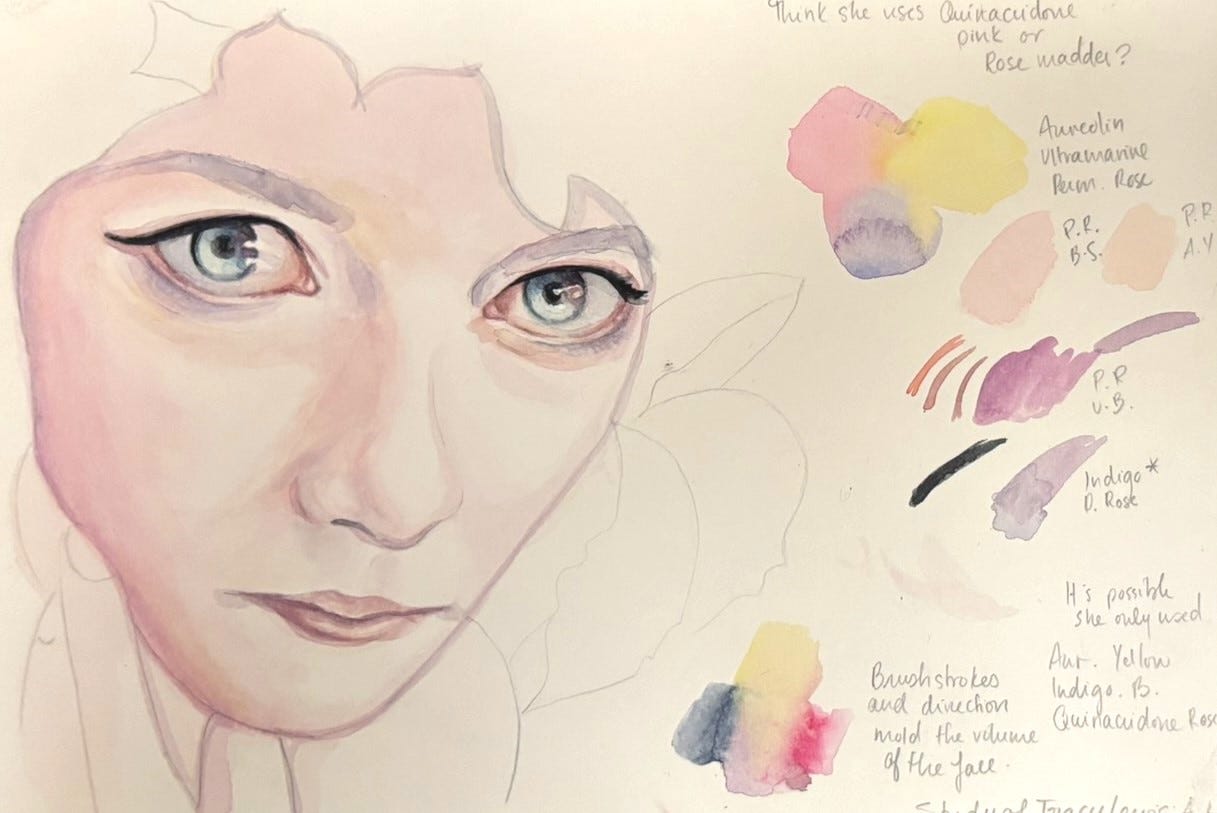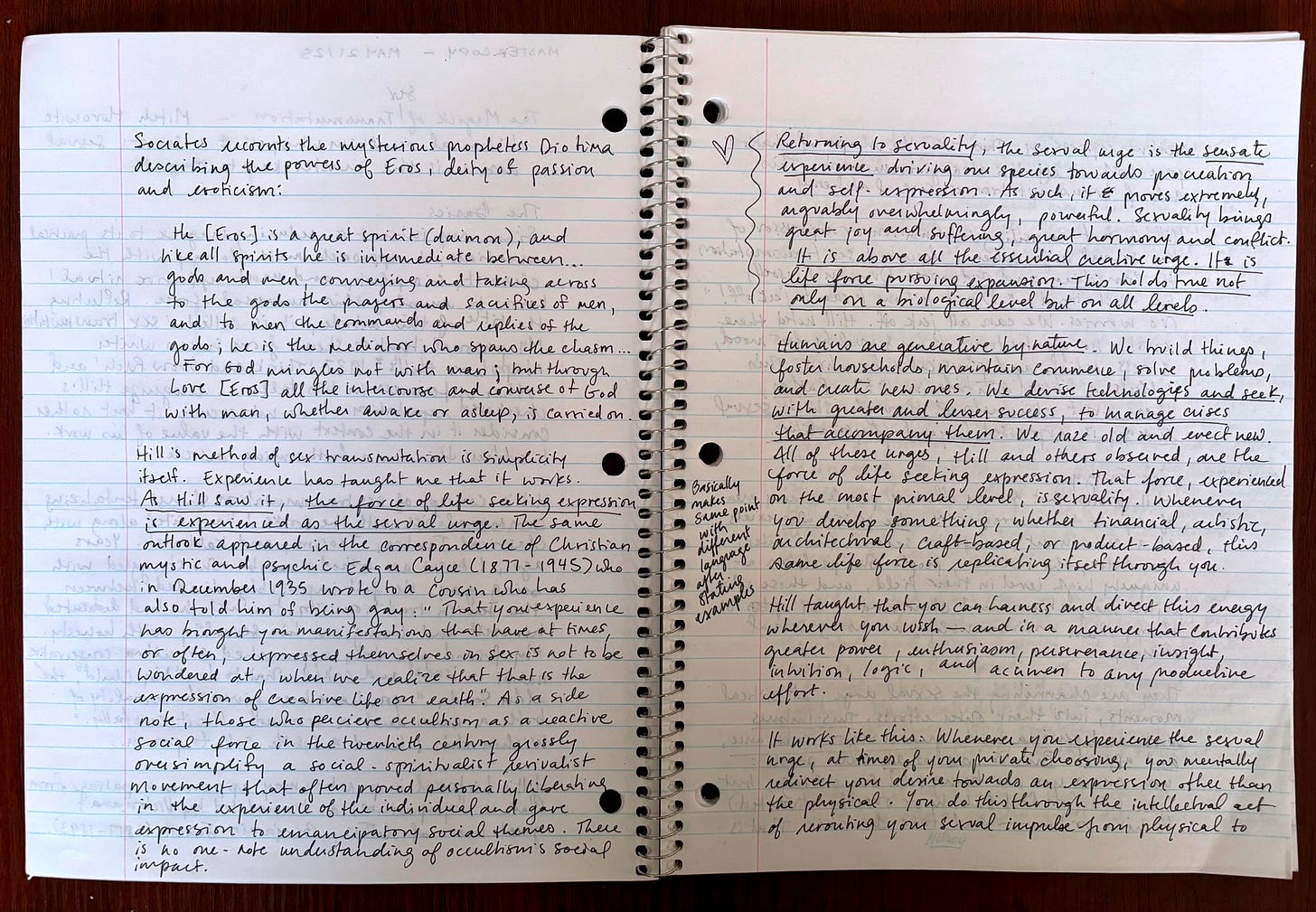If you want to get better at your craft, find someone who does it well and learn from them; copy their work. When I set myself to improve my drawing skills and learn painting over a decade ago, I largely did so by studying the art of proficient artists. Copying helped me figure out the how, the technique, behind some of the works I liked most, and helped reveal why I was drawn to certain aesthetics, helping me better articulate my sense of taste. Often, we toil over something only to find out that we missed the mark, but can't quite identify what mark we were aiming for in the first place. Copying the works of others helps me develop a vocabulary of “marks” and set concrete targets for developing new skills.
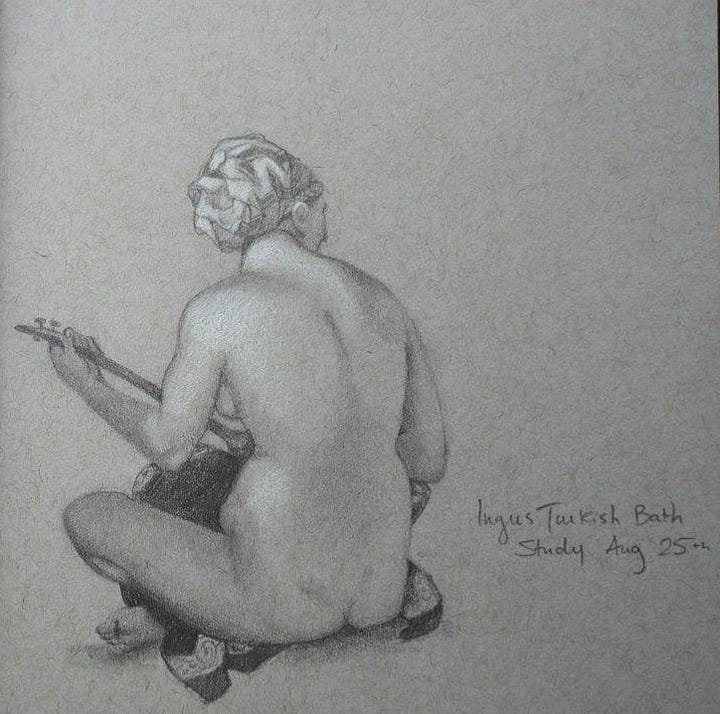
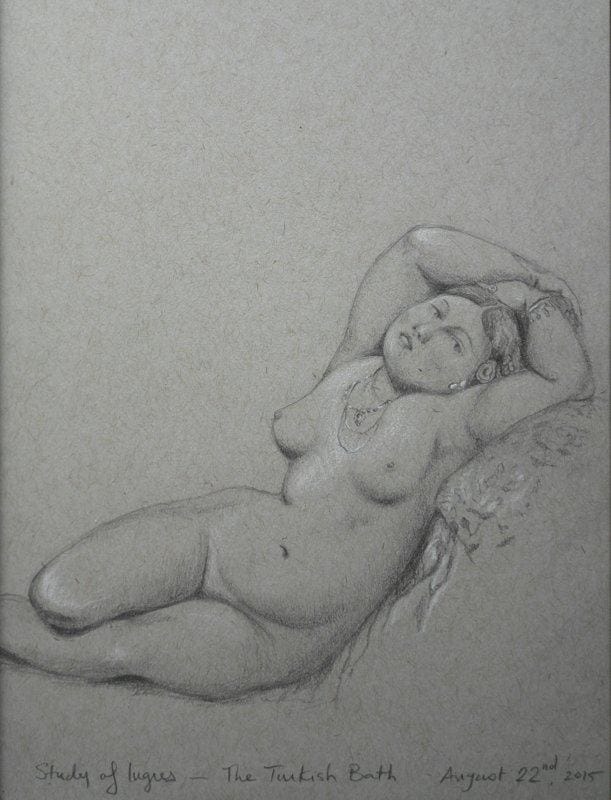
I drew these studies of “The Turkish Bath” in the summer of 2015. Although I had been drawing and painting my whole life, I remember this era as the time when I began approaching my art with greater dedication, structure, and discipline. I sought out painting and drawing classes, attended life drawing more regularly, watched online tutorials, read “How to” books, and practiced almost every day.
I picked up a pocket-sized art book at a thrift store and carried it around town in my backpack with my sketchbook and a pencil case. I rode my bike to parks and coffee shops, listened to Elliott Smith and Joanna Newsom a lot, and sketched little studies of masterpieces. Of all the artists featured in that art book, I gravitated most towards Jean-August Dominique Ingres’s paintings. Maybe it was all the naked women, how soft and smooth Ingres could paint their curves. His lines were clean and precise, his gradients impeccable. His work was controlled without looking rigid or lifeless, and I remember wanting that for myself. That was a mark I wanted to hit.
I resisted oil painting for years and stubbornly applied myself to figuring out watercolours—I don’t know why. Maybe it’s because of Tracy Lewis and Ali Cavanaugh. Ugh, their stunning use of colour! I obsessed over it, creeping their Instagram pages for a hint of the pigments they used. Both artists taught me about the sublime power of a limited colour palette: each used only a handful of pigments, and their work was more luminous and vibrant for it. Lewis’s colour palette, especially, informed my blossoming voice and style. I loved her choice of cotton-candy-pastel hues and how it clashed with her weird, unsettling yet magnetic portrait paintings.
As part of classical painting ateliers, it’s common for students to reproduce a full masterpiece. Personally, I don’t have the time. I prefer small studies I can complete in one or two sittings. I tend to work on studies when my inspiration is a bit low, and I want something straightforward to do in the studio. When I pick an artwork, I have an idea of what I hope to learn. For example, I selected “Dusk” by William-Adolphe Bouguereau to practice rendering sheer fabric and learn from the French master’s unparalleled ability to paint exquisite skin tones.
While I was already familiar with the value of copying other artists’ works, it hadn’t occurred to me to apply this approach to writing—until I heard occult historian Mitch Horowitz recommend the exercise to new writers on a podcast. Immediately after, the algorithm doubled down, peppering my Instagram feed with ads for mastercopying courses. Synchronicity or dystopia? Either way, I gave in and bought an 80-page spiral notebook that I now intend to fill, by hand, with the writing of others. Handwriting allows to seamlessly internalize other writers’ prose and become aware of linguistic and syntactic details that might otherwise get overlooked. It’s also quite relaxing.
I started with an excerpt from Horowitz’s recent article, “The Magick Sex Transmutation”—a piece that tackles a needlessly controversial topic in a clear, friendly, and well-researched manner (something I want for myself). As I mentioned in my last Studio Notes, “On Making Knowledge Yours,” I’ve been puzzling over how to incorporate research and source material into my writing without stifling my creative flow, voice, and perspective under the weight of academic habits. Studying how other writers navigate this balance has already proved helpful.
Thanks for reading! Now get out there and copy shamelessly — for educational purposes only, needless to say. Let me know how it goes. <3


